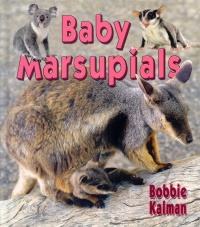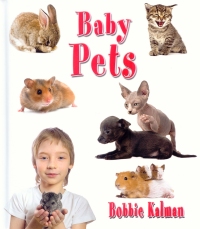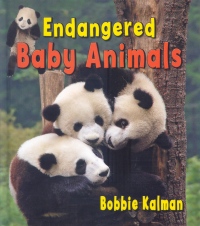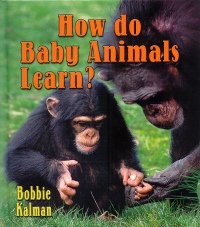| ________________
CM . . . . Volume XVIII Number 30 . . . . April 6, 2012
excerpts:
Crabtree Publishing Company has added four new books to their "It's Fun to Learn About Baby Animals" series: Baby Marsupials, Baby Pets, Endangered Baby Animals, and How Do Baby Animals Learn? The information in these books is enhanced by many colourful photographs plus a few illustrations. Key words are printed in bold and explained within the text. Key words are also included at the back of the book in a section titled "Words to Know" and "Index". "Words to Know" and "Index" is neither a glossary nor an index in the usual sense. It combines photographs and illustrations with key words and page numbers to help students locate specific information. In Baby Marsupials, for example, the key word 'bodies' is accompanied by an illustration from the main content pages of the book showing the skeleton of a koala with the labels backbone and skeleton, and directing the reader to pages 4, 6, 7, 14, 17 for information. Although there is no verbal definition of the key words, as you would normally expect in a glossary, the pictures contain information that may help students understand the meaning of the key words. Like the previous books in this series, the visual appeal of the large black on white text and colourful photos is outstanding. I do have some minor quibbles with some of the information which I will deal with in the individual descriptions of the books. Overall, these books are worth considering adding to your collection. Most of the baby animals mentioned in the books, and the series, are mammals. Baby Marsupials, Baby Pets and Endangered Baby Animals each include a section titled "What is a mammal?" Baby Marsupials includes factual information about many different marsupials. Did you know that a "quokka is a chubby kangaroo that is about the size of a pet cat"? The photographs are excellent, but I have a problem with some of the text in this book. What will young researchers make of this information?
I can't make any sense of those numbers. Baby Pets includes information on mammal pets only, and so don't look here for fish or birds or reptiles. It does include puppies, kittens, bunnies, rodents, guinea pigs, chinchilla, and ponies. There is good information on the responsibilities that accompany being a pet owner and more charming photos. If you need another book on pets, this is worth considering. Endangered Baby Animals focuses on endangered mammals, but also includes a section titled "More endangered babies" that includes some birds and reptiles. There is a separate page for "Sea turtles in danger". Again the photos are outstanding although I wonder why the picture of the polar bear and cubs shows the bears directly in front of a shrub but includes a caption that says: "There are no trees on the tundra because it is very cold and windy there." I guess it will provide a teachable moment for a discussion of trees versus shrubs, but I think it is unnecessarily confusing. The information presented in pictures and text should always support each other, but most especially at this stage in learning. How Do Baby Animals Learn? has a different focus than other books in the series. This book looks at different learning skills that babies need to develop, beginning first with a look at human babies. It is nice to see a good variety of ages, genders, abilities and interests portrayed in the photos of children included in the first section, "How do you learn?" The next section, "How do animals learn?", asks a questions and then tells the reader what page to find the information to answer that question.
These books, with their large, clear black on white text and beautiful photographs filled with details, will be useful additions to libraries looking for entry level research books on baby animals. Recommended. Suzanne Pierson is a retired teacher-librarian, currently instructing Librarianship courses at Queen's University in Kingston, ON.
To comment
on this title or this review, send mail to cm@umanitoba.ca.
Copyright © the Manitoba Library Association. Reproduction for personal
use is permitted only if this copyright notice is maintained. Any
other reproduction is prohibited without permission.
NEXT REVIEW |
TABLE OF CONTENTS FOR THIS ISSUE
- April 6, 2012.
AUTHORS |
TITLES |
MEDIA REVIEWS |
PROFILES |
BACK ISSUES |
SEARCH |
CMARCHIVE |
HOME |



